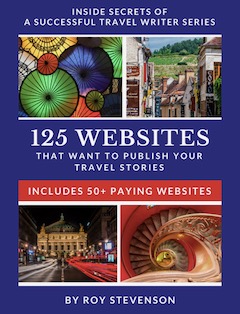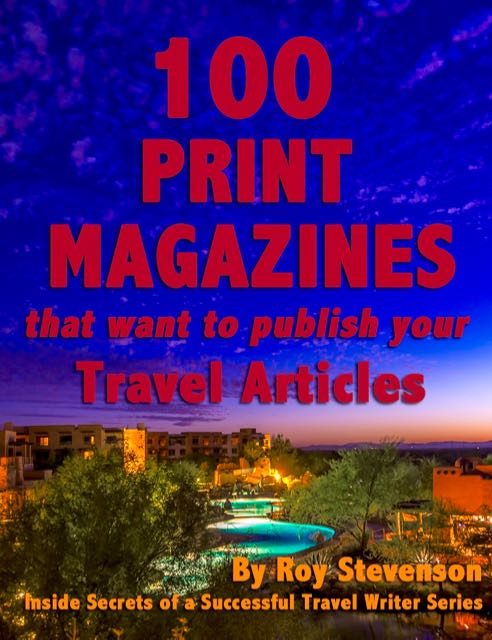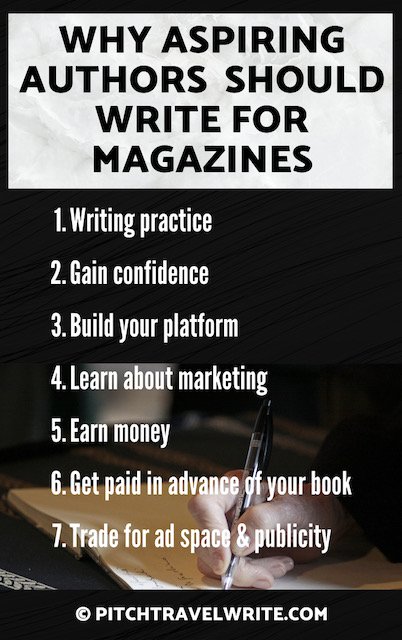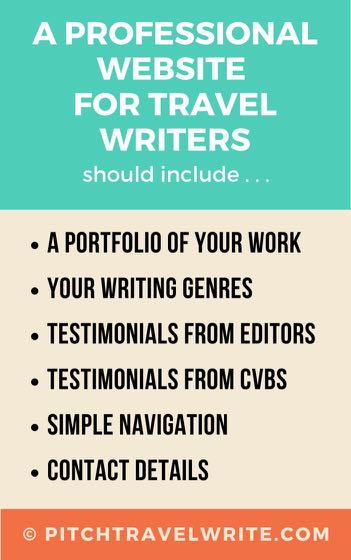- Home
- Business Basics for Travel Writers
- 6 Tips to Increase Your Productivity
Increase Your Productivity:
Use these 6 Tips to Save Time and Earn More Money
By Roy Stevenson
Finding ways to increase your productivity as a freelance writer is important when you work alone. You’re doing every kind of task - from administrative tasks to marketing and writing activities. Chances are you'd rather focus on writing because that’s the fun part.
Identifying smart ways to minimize the time you spend on the less enjoyable tasks is important. If you can increase your productivity you'll be more efficient and stop feeling so overwhelmed.
How can you create more time in your day for the things you really want to do?
How can you earn more money with less effort?
Here are six ideas that will save you huge chunks of time and help you to earn more money:
Repetitious Tasks? Use Templates to Increase Your Productivity
Doing repetitious tasks and starting from scratch each time is obviously a time waster. Yet many freelancers work like this.
 Young artist in Bali, Indonesia creates maps using a template. Tourists don't care that they're all basically the same. And each handmade map is unique thanks to a few finishing touches.
Young artist in Bali, Indonesia creates maps using a template. Tourists don't care that they're all basically the same. And each handmade map is unique thanks to a few finishing touches.In my first two years, I wasted a lot of time by laboriously creating every one of my query letters from scratch. I tailored each query perfectly for each magazine I was pitching. It would often take several hours to write a new query letter.
Years later, having written hundreds of query letters, I learned to increase my productivity and be a lot more efficient. I can now crank out a great query letter in less than one hour.
That's because I don’t start my query letters from scratch anymore. Instead, I use a template.
And it isn’t limited to my query letters.
I’ve got templates for query letters, for my writer’s bio, for my bylines, for thank-you letters, for invoices, and other purposes.
Using templates for repetitive tasks saves me a boatload of time. It's a great way to increase your productivity.
Here’s how to do it:
- What are the things you do on a regular basis? Query letters. Invoices. Requests for information. Letters to tourist agencies requesting assistance with your itinerary. Thank-you letters.
- Read through a few examples of each type of document and note what’s similar in each one. Then, create a basic template from those letters, using the best content you’ve written. Save it to a templates folder.
- When it comes time to write that kind of document again, you can open the template, copy it, and customize it as needed . . . or not.
- Look at your most successful query letters that resulted in sales. Use them as the basis for your query template.
- If you write in multiple genres you’ll want to customize your query letters to suit each genre. Then, all you need to do is tweak it for your specific story angle.
My book, The Complete Guide to Query Letters for Travel Writers provides examples of my best query letters for a variety of genres, and explains the marketing techniques that helped sell the articles to editors. You can use these same query letter templates to sell your story ideas.
Many of our readers have used my query letters as templates and met with great success. They’ve sold hundreds of travel stories doing this.
Don’t agonize over customizing your query letter when a more universal one will do. This is not lazy, it’s smart. Will the editor care? Not at all. Why waste your time reinventing it?
Save your time and increase your productivity on administrative tasks. Set up templates for every repetitive item on your list.
Create then Reuse Your Magazine Lists to Increase Your Productivity
It takes many hours to pore through magazines, the Writer’s Market, and the Internet to locate potential markets for your stories. Taking the time to record the details and keeping an up-to-date record of these details is part of your intellectual property as a writer. And it will save you a bundle of time in the end.
What should be included in your magazine distribution lists?
Include the most pertinent information: the magazine title, the editor’s name and contact details, and a column for “notes” about the magazine. Constantly update this list as editors change.
Starting a list of magazines from scratch every time you pitch is time consuming! Instead, increase productivity by doing it once. You’ll never have to create it again. After you have your list you just add to it as you discover new magazines.
I’m always surprised at the large number of freelance writers I’ve met who do their magazine search from scratch every time they want to sell a story. What a terrible waste of time!
Let me give you an idea of what I compiled over my years of freelance writing. I have more than three dozen separate magazine and newspaper distribution lists, one for each genre. The genres range from sailing magazines to travel magazines, and from wine and food magazines to automobile and military magazines.
You can also purchase lists to use as a foundation the build upon. My two books, 125 Travel Websites that Want to Publish Your Travel Stories and 100 Print Magazines that Want To Publish Your Travel Articles contain distribution lists created to save you valuable time. You can use these lists as a foundation, add your own items, and create even better lists.
Increase Your Productivity with Good Document and Photo Management
Once you start selling articles to magazines and websites you need to keep track of your published articles. Create a simple table with the magazine name; the title of your article; when you sent the story to the editor; when you sent your invoice; and when you received payment.
You’ll also want to be organized about keeping digital copies of your articles, the photos that accompanied the articles, and your captions for the photos.
When you’re starting out on your freelance travel writing journey, it’s hard to get excited about creating systems to keep track of everything.
But this paperwork doesn’t take care of itself. Without some sort of basic document management system, you’ll spend half the day trying to find records and information from a disorganized morass of documents.
Increase productivity by figuring out your own personalized system. Store your lists, folders, reference materials, contacts, distribution lists, form letters, query letter templates, and the myriad other documents in an easily retrievable platform.
Keep it simple. Your record-keeping systems do not need to be complex to be good. They just have to work for you.
Increase Your Productivity by
Rewriting and Reselling Your Articles
Many writers get stuck in the bear trap of writing an article for one publication and never selling the story again. This makes sense if you’re selling the article to the high-paying top shelf magazines.
But the vast majority of magazines pay considerably less than $1/word, so your objective is to squeeze as many articles as possible out of a topic.
Writing about the same topic from different angles, for different magazine outlets is an easy way to do increase your productivity. You know the topic, you’ve done the research, you’ve taken the trip – why not make the most of it?
Rewriting or reselling your original article saves you time and increases your revenue well above the one-and-done approach. This technique requires considerable creativity, but once mastered becomes easier and earns you significantly more income.
Research Several Stories Simultaneously to Increase Your Productivity
We’re lucky to have technology to help us do our research easily, often without ever getting out of our desk chair. When researching a destination, try researching several stories simultaneously to increase your productivity.
Here’s an example:
While planning a lengthy trip to Singapore and Borneo, I amassed information for thirteen stories for Singapore and twelve more for Sabah, Sarawak, and Brunei. How long did this take? Only three days.
I studied my guidebooks and scoured the internet with multiple stories in mind. I came up with twenty-five story ideas from that research, saving much duplication of effort.
For your next trip, first decide which places you’re thinking about visiting. Then, gather all your published materials, sit down in front of your computer – and do the work all at once.
Coming up with a big batch of story ideas from one round of research will boost your productivity very quickly.
Increase Your Productivity by
Getting Repeat Business with Editors
Savvy freelancers know that it’s easier to keep working with the editors you have than to keep finding new ones. So, once you’ve established a working relationship with an editor, keep pitching that editor more story ideas for repeat business.
It’s easier to work with one editor with whom you’ve established a relationship, than to approach and “break in” new editors. (Editors feel the same way about writers, too.)
Once you’ve proven yourself to an editor you’ll find it easier to sell that editor subsequent story ideas. Getting repeat business beats starting from scratch with new editors, every time. Increase your productivity using this tip will result in more sales.
What does it take to prove yourself to an editor? Deliver well-written articles that needs little or no editing, and deliver them before deadline.
There’s another time-saving advantage to developing a strong working relationship with an editor. As an editor becomes comfortable with you and your work, you’ll usually be able to propose new story ideas with less detail.
I’ve been working with the editors of some triathlon and running magazines in three different countries for so long now that I simply write my article and send it to them. They publish it. No query needed!
Certainly it took a while to get to this point with my editors, but it’s worth it when you do.
Implement any – or all – of these ideas, and you’ll find you increase productivity and have more time on your hands. You'll earn more money and you’ll have more time to do the things you really want to do – write and travel!
More Related Articles . . .
Seven Ways to Increase Productivity for Travel Writers
Four Reasons to Sell Multiple Story Ideas and How to Do It
Your Travel Writing Craft Resource Page

Roy Stevenson is a professional travel writer and the author of www.PitchTravelWrite.com. Over the past ten years, he’s had more than 1000 articles published in 200 magazines, trade and specialty journals, in-flights, on-boards, blogs and websites and has traveled on assignment around the U.S. and to dozens of international destinations.
IF YOU ENJOYED THIS POST, GET UPDATES. IT'S FREE.



















